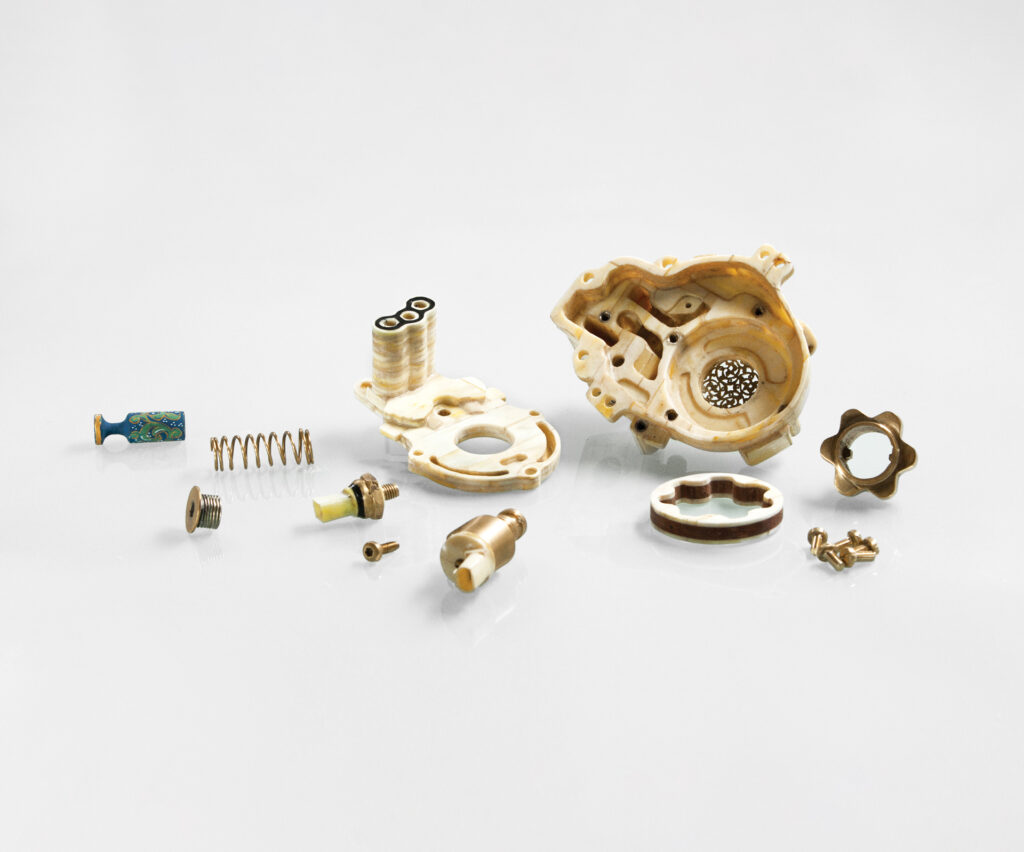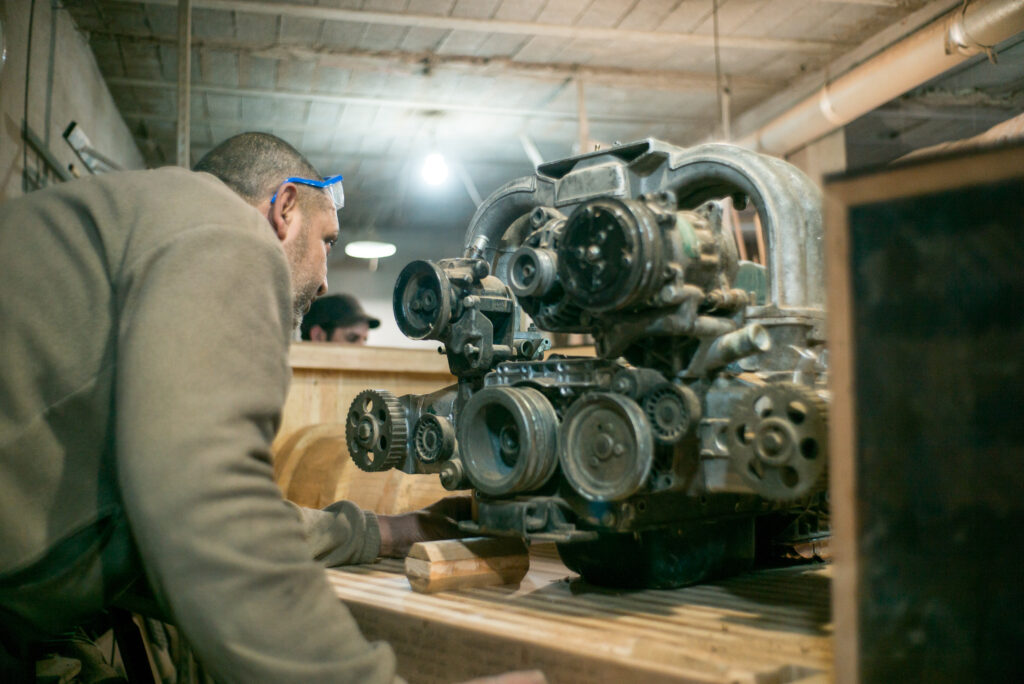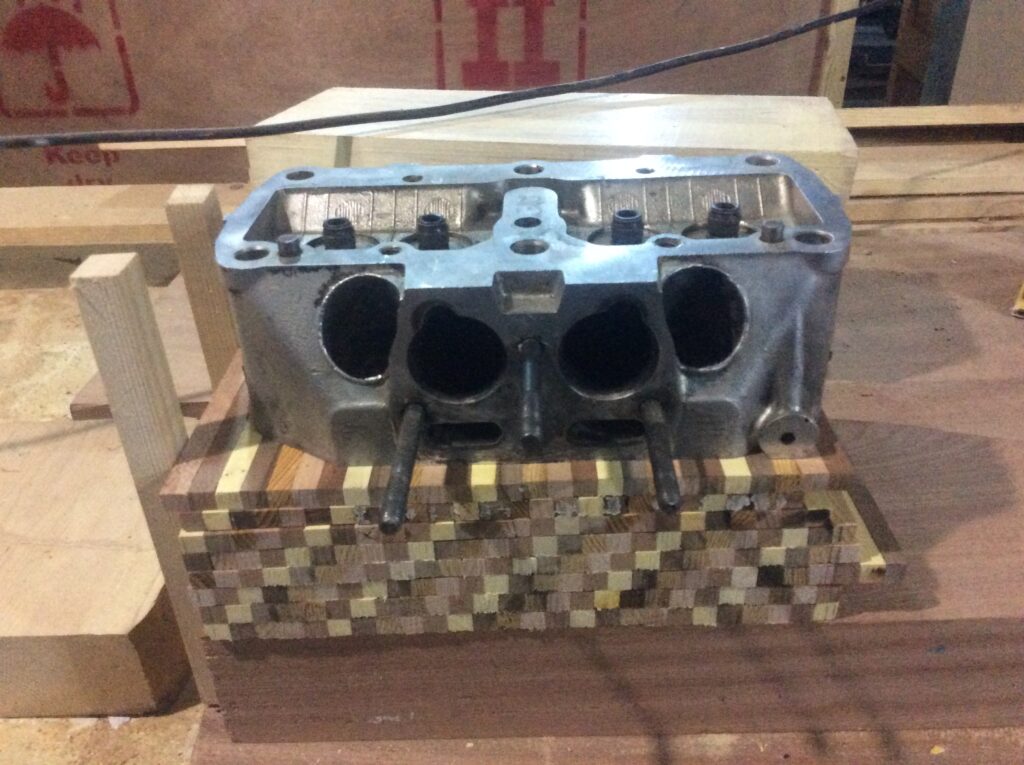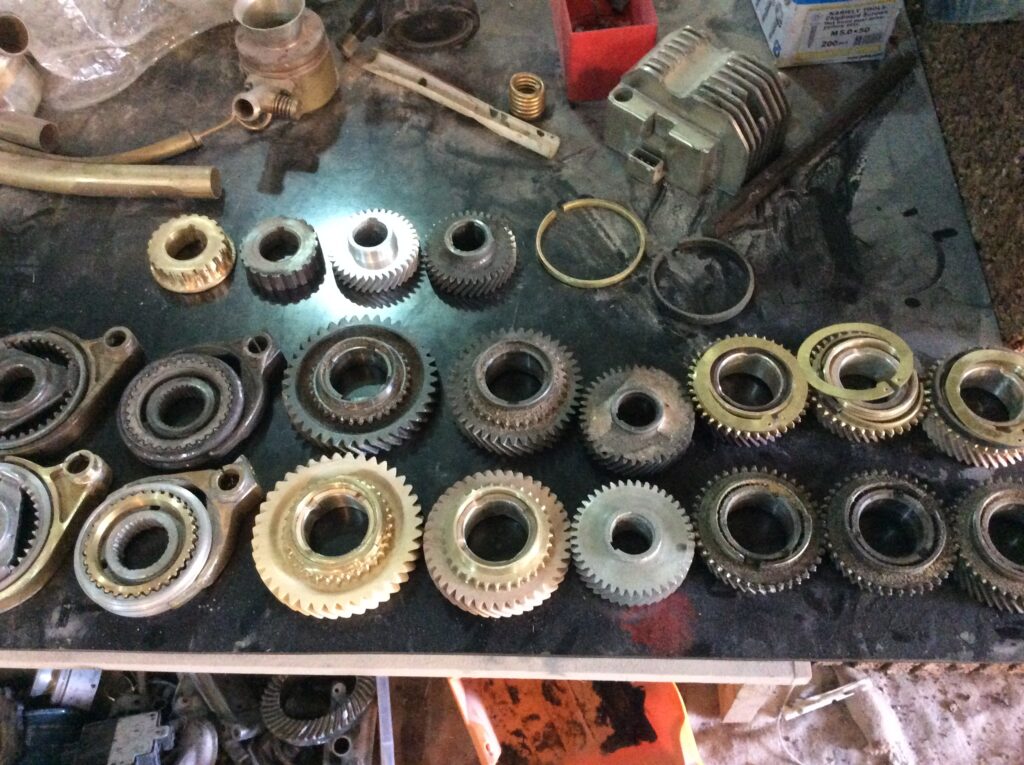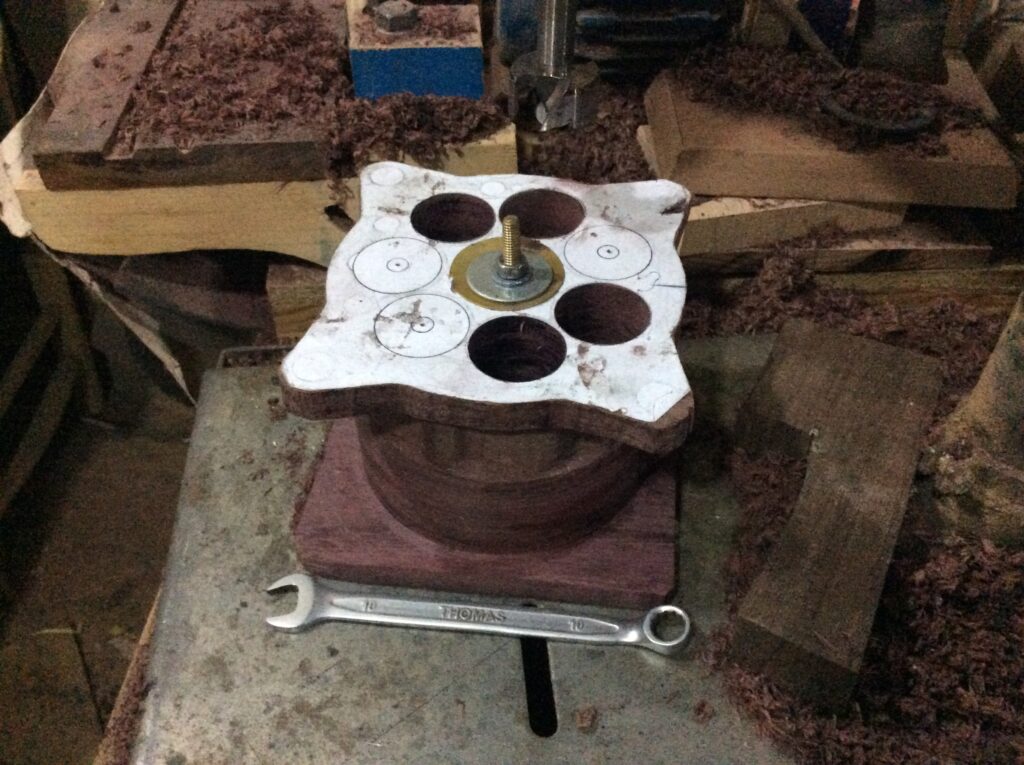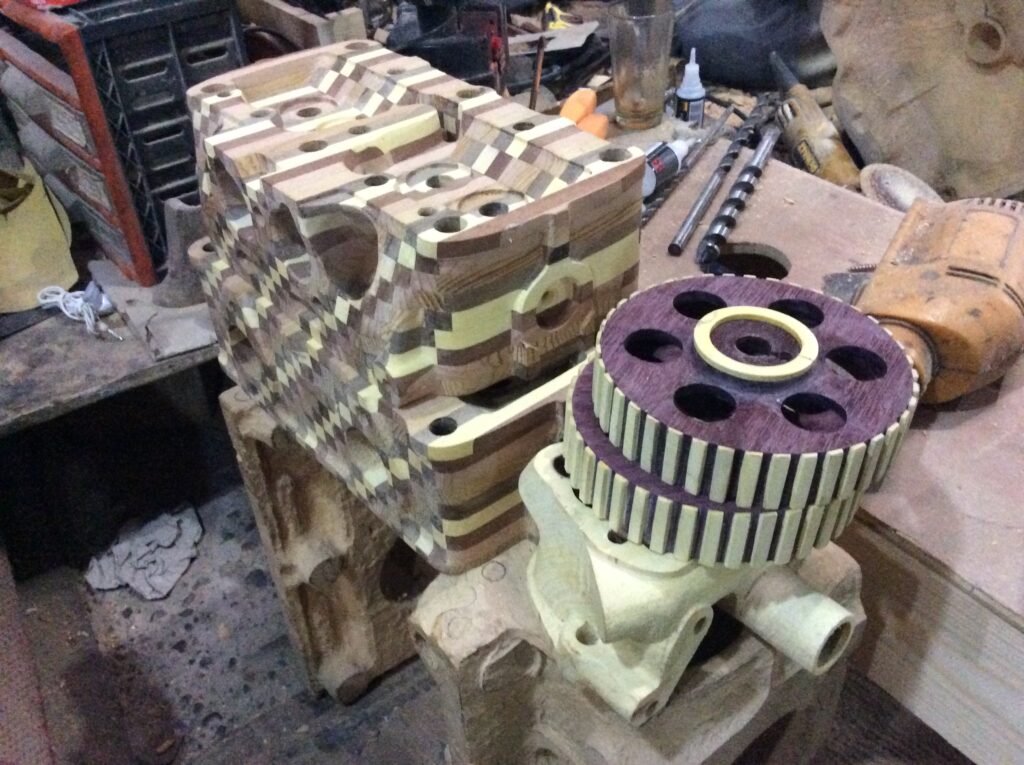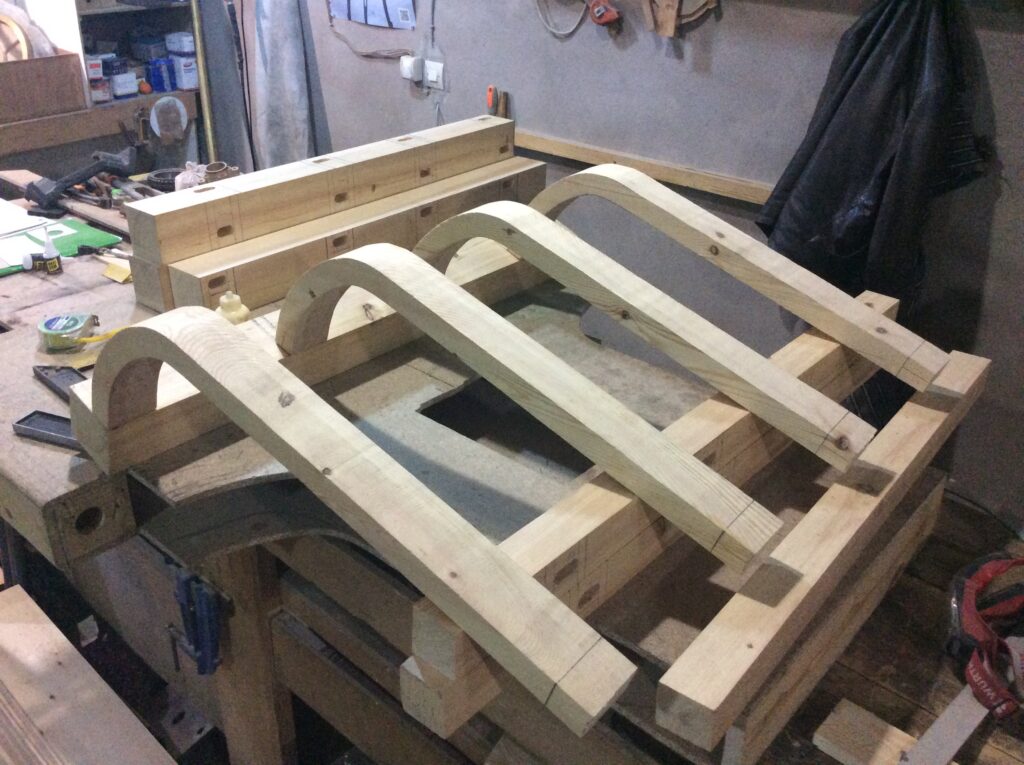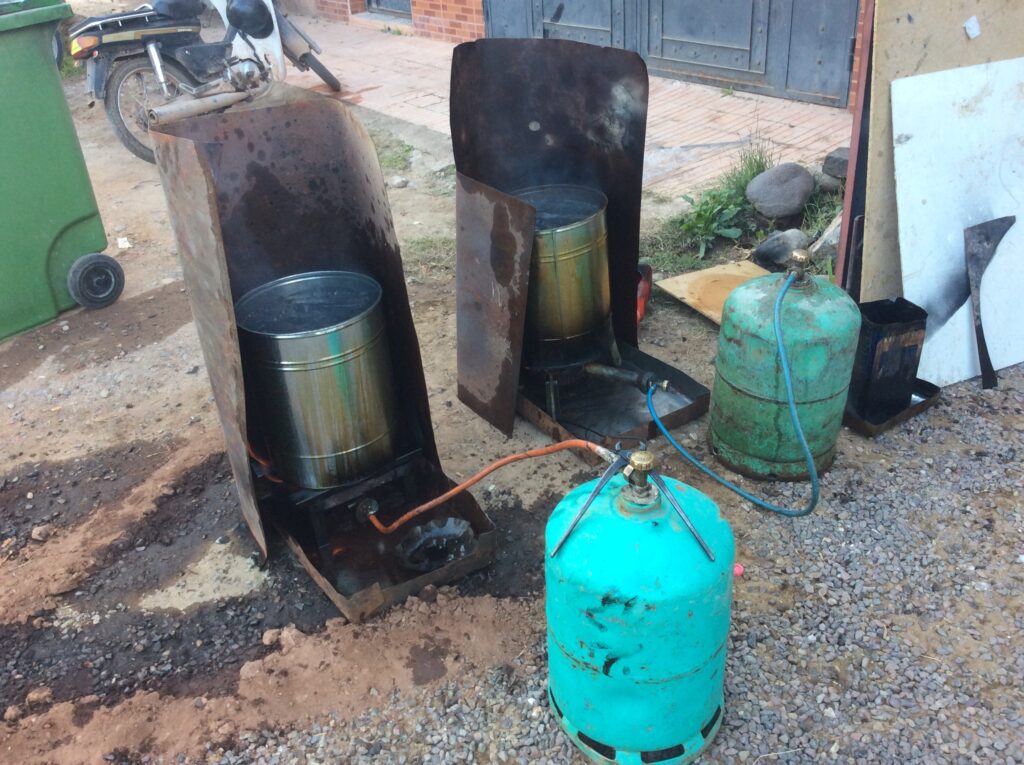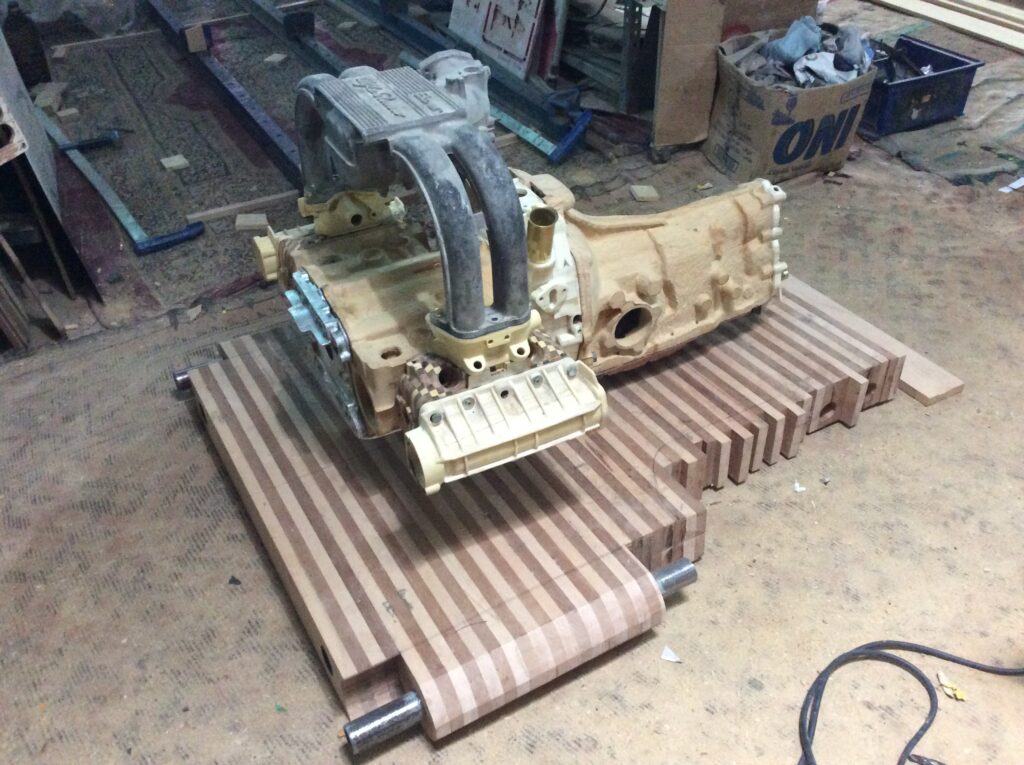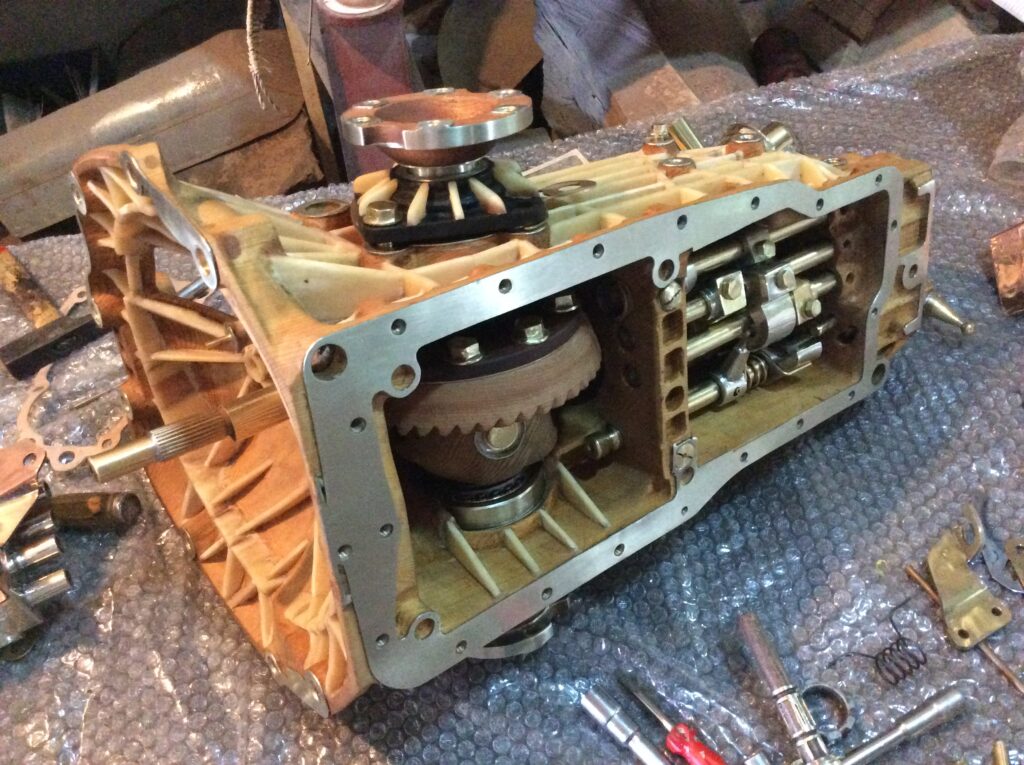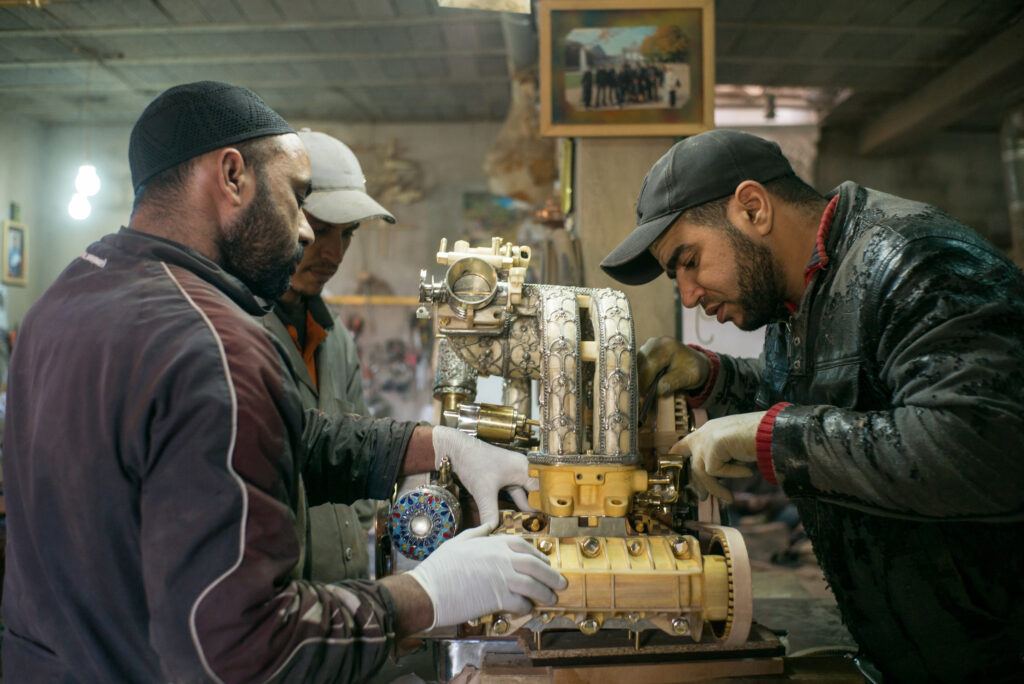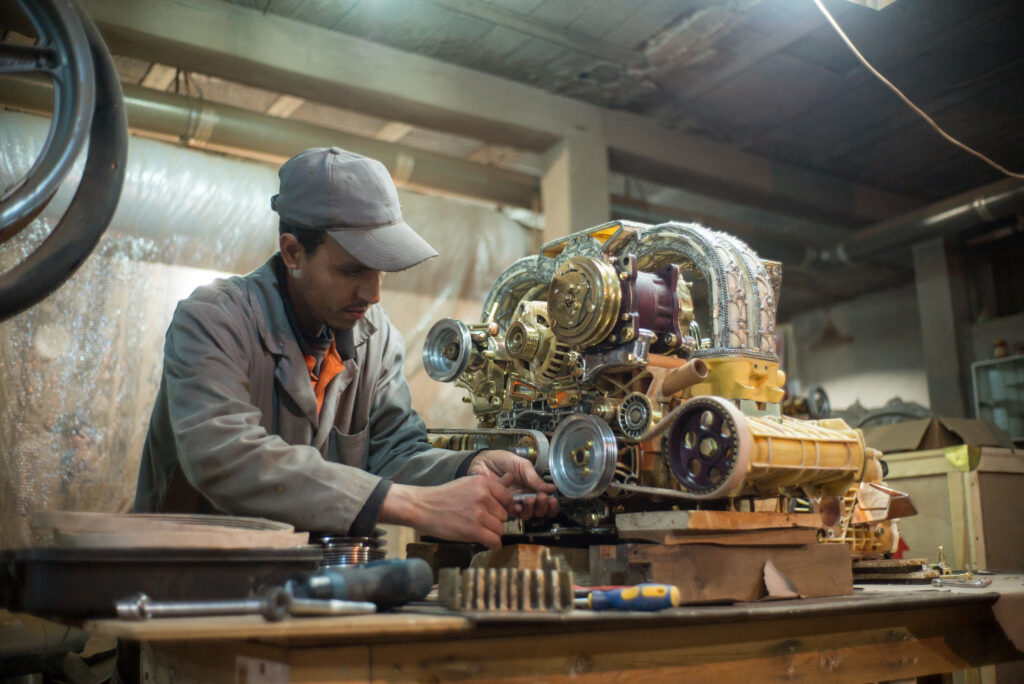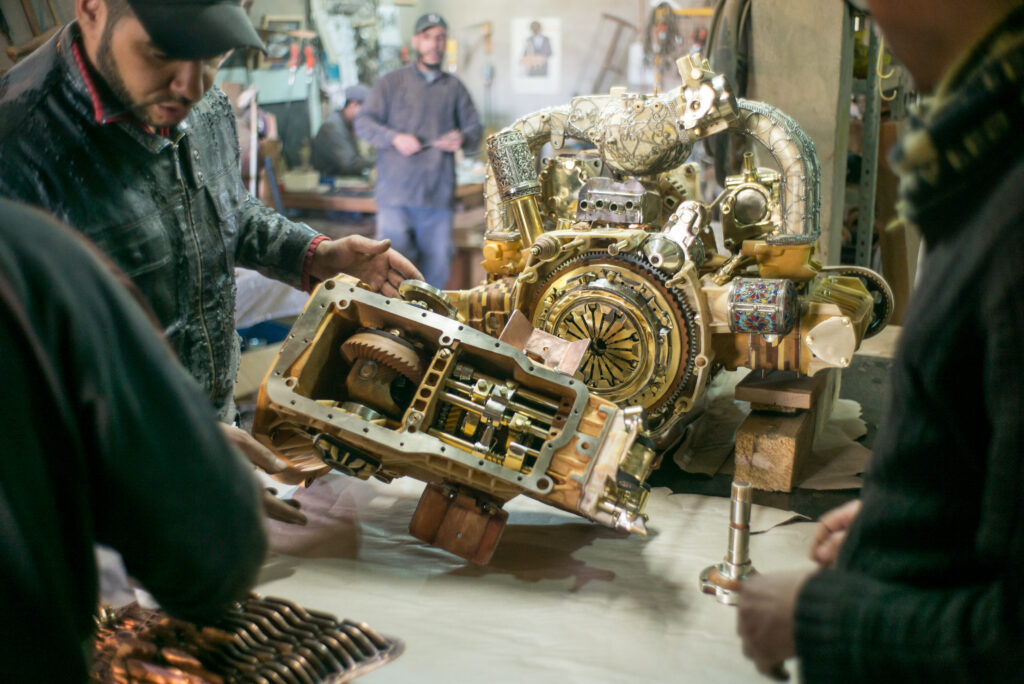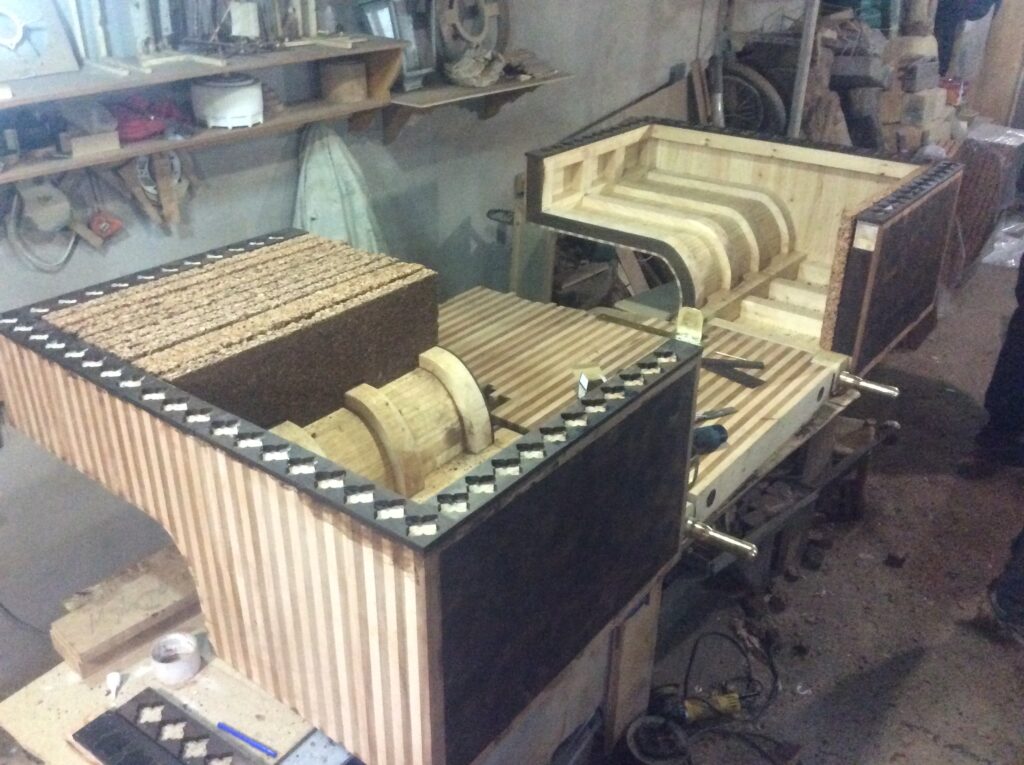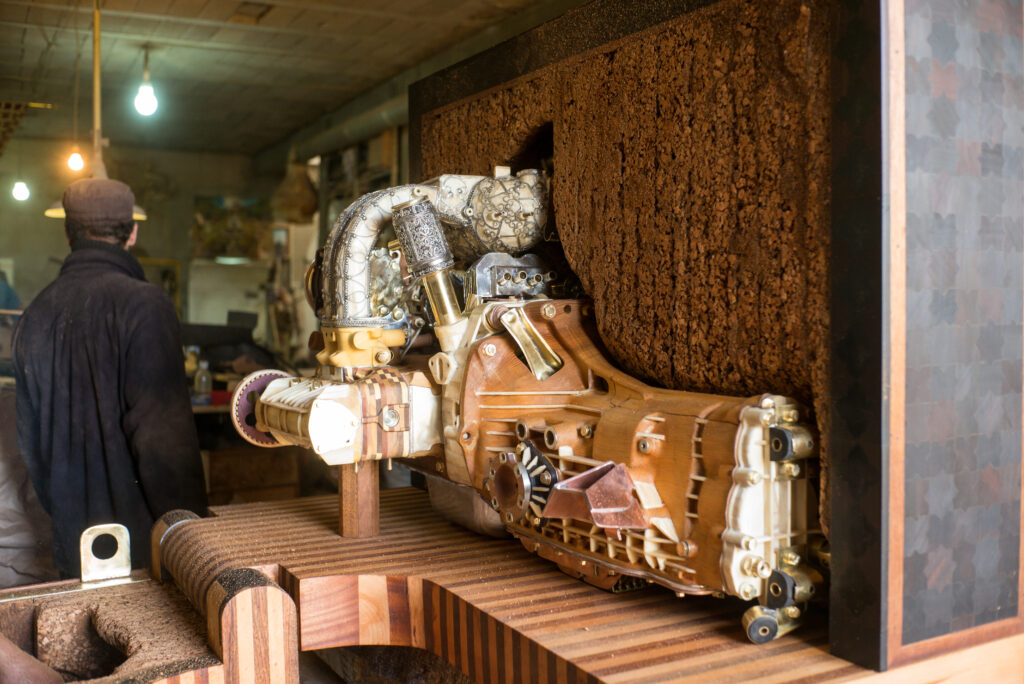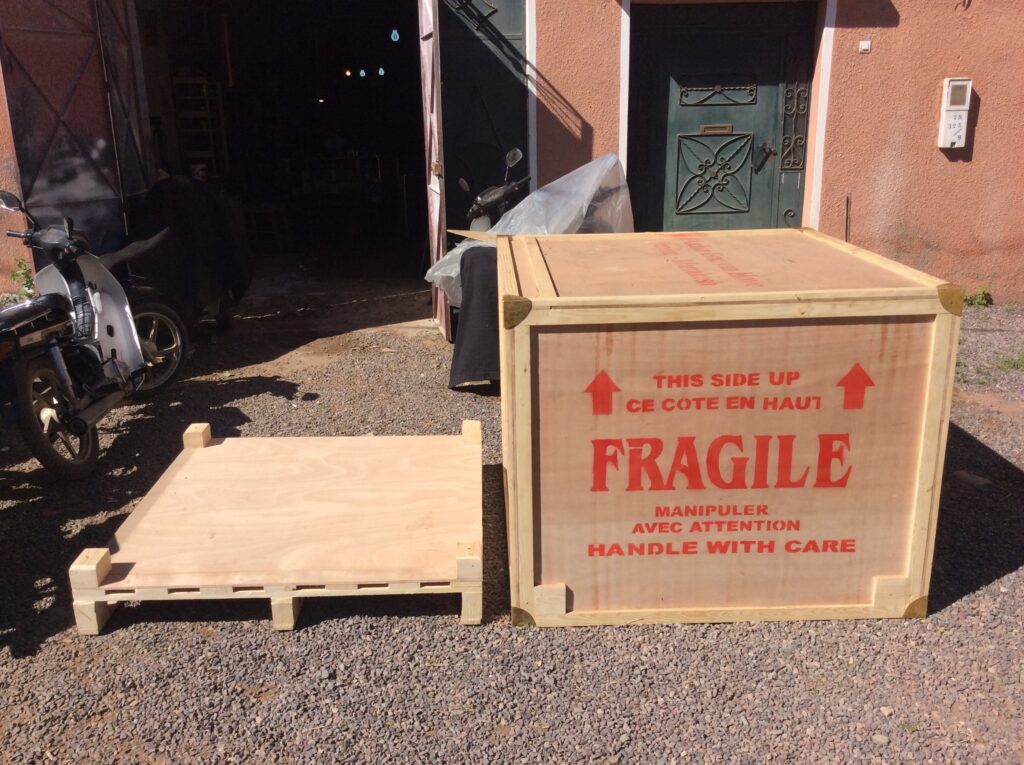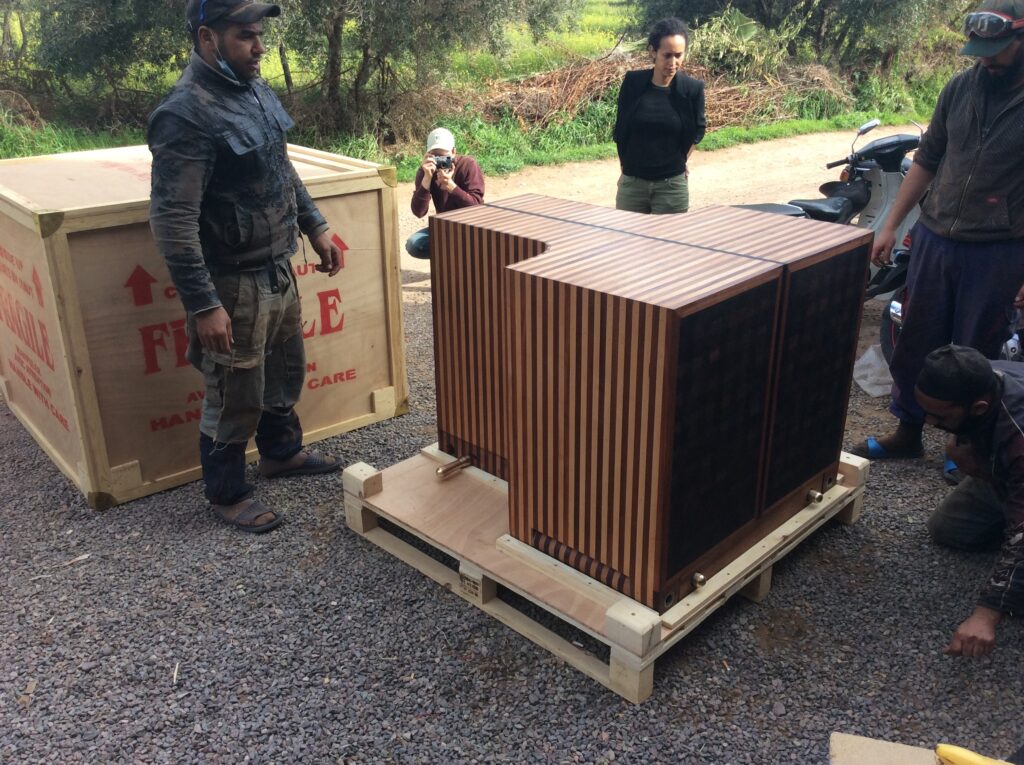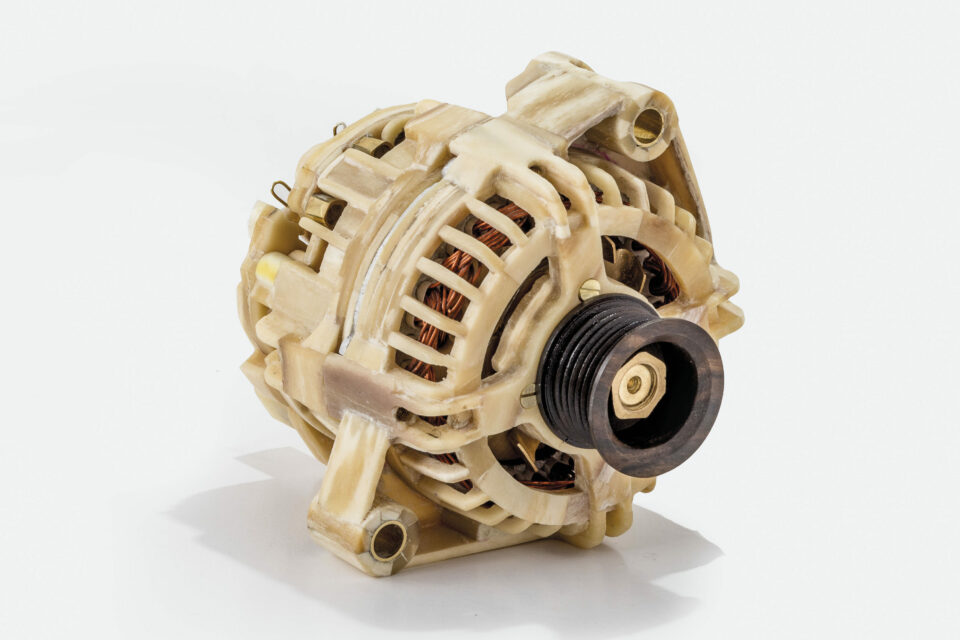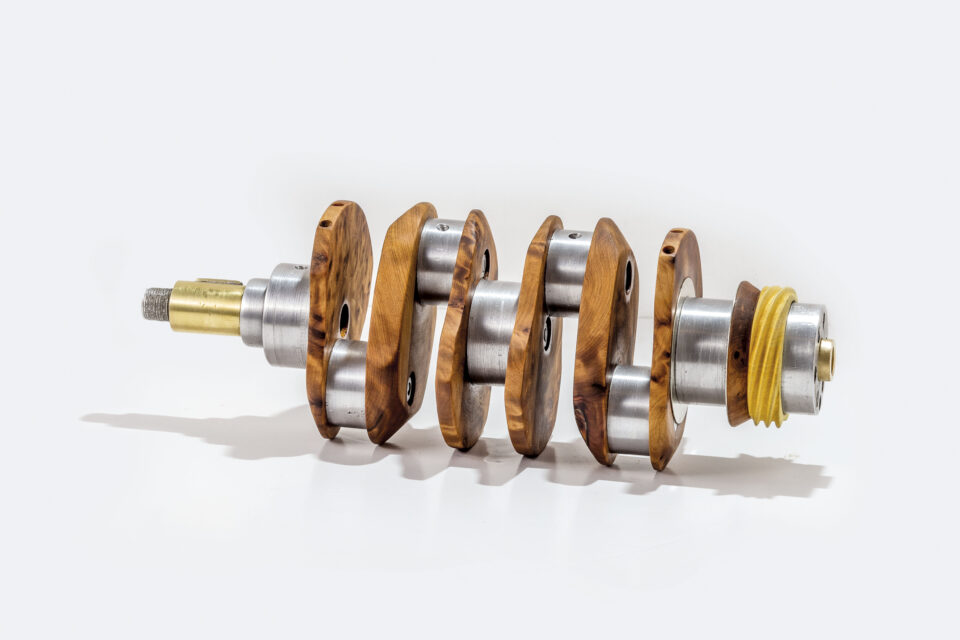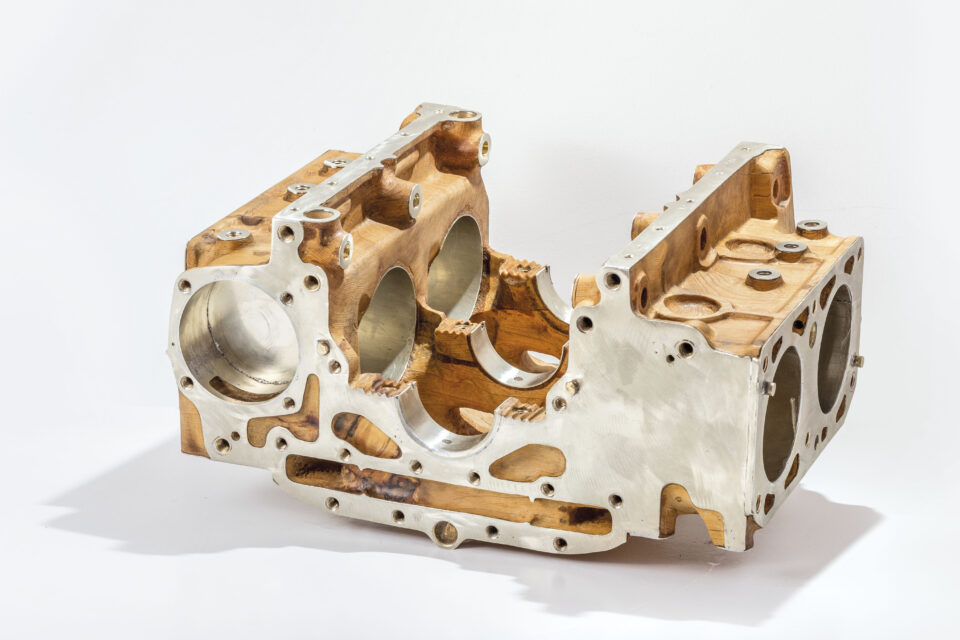Mixed media (32 Materials): Middle Atlas white cedar wood, walnut wood, lemon wood, Purple Heart wood from Brazil, orange wood, mahogany wood, Essaouria Thuya wood, Moroccan beech wood, pink apricot wood, yellow copper, red copper, recycled aluminum, nickeled silver, silver, tin, cow bone, camel bone, cow-skin, resin, cow horn, Ammonite fossils from Erfoud, paint, cork, henna(dye), Chinese superglue, recycled copper, wood glue, neoprene glue, olive tree wood, steel, Moroccan pine wood & sunflower oil.
Size (closed for transport): 120cm x 101cm x 90cm – Composite sculpture (about 200 parts)
Size (open for exhibit): 120cm x 138cm x 138cm
Weight: 371 kg
Edition: Unique
Courtesy: For Arts Sake Collection, Lisbon, Portugal
Photo: Frank Ellenberger
Craftsmen involved: Abdelkhader « dragon » Hmidouch, Abdeljalil Ait Boujmiâa, Mohamed Ouhaddou, Soufian Sahli, Mehdi Ghinati, Abdelghafour Boutkrout, Adbelatif Boulaâdam, Mustafa Jaouale, Redouane Errahel, Youssef Ait Ali, Hassan Himed, Ahmed Id-Nacer, Abdelrahim Boutkrout, Abdelali Arib, Mustafa Moufdi, Hicham Ait Boujmiâ, (Frères Ouhaddou) Salam Ouhaddou, (Frères Ouhaddou) Lhsen Ouhaddou, Youssaf Mohaounos, Mohamed Qachoch, Noureddine Miraoui, Hicham Ait El, Mustapha Behzaz, Abdelali Ezhidi, Khalid Boutissa.
The choice for the Alfasud as a subject can be found in the combination of technology, national identity and socio-economic history connected to the development of this car.
Due to the number of car parts being imported from Europe into Africa or Morocco specifically for repair purposes, a used Alfasud engine was found after it was brought in as part of a larger shipment to a local scrapyard in Marrakesh. The artist got interested by this singular engine because of its interesting history: in the 70’s, the production of the Alpha Sud was intended to be an economical stimulant for the largely unemployed south of Italy, hence the name. A completely new engine design was needed due to the car size. For this purpose a factory was build in Pomigliano d’Arco near Napels. The motivation for this choice may be better understood knowing that the owner of the Alpha Romeo brand at the time was the Italian state and the south of Italy was in desperate need for economic investments.
Although the production of the small family automobile was supposed to bring prosperity and at first it seemed successful, it failed as a car in the end. The production was hindered by social unrest and logistical problems resulting in a car that was known to rust very quickly.
